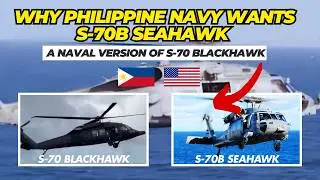Why does the F16 Fighting Falcon reign supreme after 50 years?All about F16XL, F-2, F-16 Wild Weasel
Why does the F16 Fighting Falcon reign supreme after 50 years?All about F16XL, F-2, F-16 Wild Weasel, F-16 MLU.
Why does the F16 Fighting Falcon still reign supreme after 50 years? The F16 Falcon which made its Maiden flight in 1974 is commemorating 50 years of service this year despite Global changes in the military landscape and persistent technological advancements over the past half century its popularity has not diminished. The combat record of the F-16 bears witness to its efficiency in warfare. The F-16 has continuously proven to be an effective weapon in air-to-air combat and precision attack missions, from the Gulf War to more current conflicts. Its reputation and desirability are increased by its success in real-world situations.
F-16 Wild Weasel
The F-16 Wild Weasel refers to an F-16 Fighting Falcon variant that is specialized for Suppression of Enemy Air Defenses (SEAD) missions, also known as "Wild Weasel" missions. These missions involve targeting and destroying enemy air defense systems, such as surface-to-air missile (SAM) sites and radar installations, which pose a threat to allied aircraft.
The F-16CJ is the most notable Wild Weasel version of the F-16, specifically modified for SEAD operations. It is equipped with advanced avionics and electronic warfare systems, including the AN/ASQ-213 HARM Targeting System (HTS), which is designed to detect, identify, and track enemy radar signals. This allows the F-16CJ to launch AGM-88 HARM (High-Speed Anti-Radiation Missiles)**, which home in on enemy radar signals and destroy the radar systems that guide surface-to-air missiles.
F-16 XL
The F-16XL is a highly modified version of the standard F-16 Fighting Falcon, developed by General Dynamics in the early 1980s. It was created as a demonstrator for advanced aerodynamic technologies, primarily to compete in the Enhanced Tactical Fighter (ETF) program, which was aimed at selecting a new strike aircraft for the U.S. Air Force. The program was eventually won by the F-15E Strike Eagle, but the F-16XL remains an iconic experimental platform due to its unique design and capabilities.
The F-16XL competed in the ETF competition in the early 1980s, which sought a replacement for the F-111 Aardvark in the long-range strike role. Although it had impressive performance, the F-15E Strike Eagle was chosen due to its heavier payload capacity and two-engine reliability.
After losing the ETF competition, the two F-16XL prototypes were used by NASA for research purposes, primarily in aerodynamics and laminar flow studies. The F-16XL proved to be a valuable testbed for exploring advanced flight dynamics, and it contributed to research on supersonic flight and fuel efficiency.
Though it never entered production, the F-16XL remains a significant part of aviation history due to its innovative design and influence on subsequent aircraft development.
F-16 AM / BM Mid Life Upgrade
The F-16AM and F-16BM are modernized versions of the original F-16A and F-16B models, which were first introduced in the late 1970s. The “A” and “B” designations originally referred to the single-seat and dual-seat versions, respectively. The "M" in these variants stands for "Mid-Life Update (MLU)", a comprehensive modernization package that extends the aircraft’s service life and upgrades its combat systems, avionics, and structural integrity.
The F-16AM is the single-seat version, while the F-16BM is the two-seat trainer variant, both upgraded with cutting-edge technologies to match today’s combat needs. These jets are widely used across NATO countries, such as Belgium, Norway, Denmark, and the Netherlands, forming a backbone for these nations’ air forces.
F-2 Viper Zero
The F-2 Viper Zero is a multirole fighter aircraft developed jointly by Japan and the United States, based on the F-16 Fighting Falcon. Often referred to as Japan’s version of the F-16, the F-2 incorporates significant design and technology upgrades tailored to Japan’s defense needs. It was developed by Mitsubishi Heavy Industries in collaboration with Lockheed Martin, with the first flight taking place in 1995 and the aircraft entering service in the early 2000s.
Background Music
Midnight Shadows Revel
Song by https://stocktune.com/free-songs/ener..."
FAIR-USE COPYRIGHT DISCLAIMER
Copyright Disclaimer Under Section 107 of the Copyright Act 1976, allowance is made for "fair use" for purposes such as criticism, commenting, news reporting, teaching, scholarship, and research. Fair use is permitted by copyright statutes that might otherwise be infringing. Non-profit, educational, or personal use tips the balance in favor of fair use. Defense Forces Insight does not own these videos and pictures rights. Under fair use, they have been repurposed to educate and inform.
#f16fightingfalcon #multirolefighter #f16



















